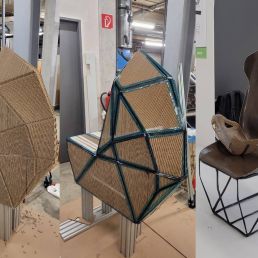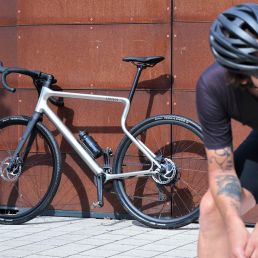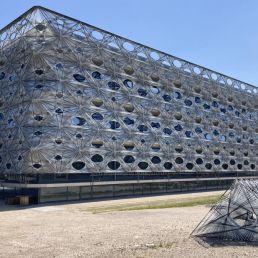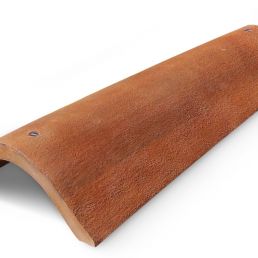
MotorSkins morphing textiles
fabrics with embedded fluidics for Human-machine interaction
19 April 2022
In a world increasingly dominated by visual and auditory information exchange, MotorSkins morphing textile surfaces bring back touch as a way to interact with the world around us. Their textile systems are capable of sensing and giving haptic feedback. They move on their own and can even help users while moving. This is all possible thanks to a clever and simple design inspired by the movement of plants.
MotorSkins morphing technology does not require any electronics
The Berlin-based company designs and produces textiles with embedded fluidics for Human movement and Human-machine interaction. Depending on the geometry of the fluidic circuit and the chosen materials, different behaviors can be programmed into the system.
Its first product, a dynamic compression garment for legs, uses the movement of the user to provide soft oscillating massage to the calf, combating the negative health effects of standing for long periods of time. What is unique about the system is that it does not require any electronics such as batteries or motors
As the user walks, they compress one part of the system, which transfers volume and pressure to the active part and triggers the dynamic compression. Motorskins products are at the interface of sports, wellness and health, with potential applications in medical devices, safety at work, relaxation, training and even to assist movement.


For MotorSkins, its textile technology is a means of achieving simple, elegant and affordable solutions for democratizing assistive technology. The company wants to be the ones to bring this change forward.
MotorSkins is also working on additional wearables with a strong social sustainability aspect, in partnership with ITL studio and as part of the European S4Fashion initiative.
This new line of garments will explore the concept of “haptic vision”: merging haptics, aesthetics and advanced function in fashion for the visually impaired. The aim is to produce garments that are more inclusive and that embrace sustainability also in terms of durability and social impact.
Another application of MotorSkins’ technology also makes use of haptic fabrics, though not in apparel: morphing textile surfaces for human-machine interfaces. These are tactile elements such as buttons which can serve for example as discreet control elements, switching from an invisible (flat) state to a visible and active (raised) state.
The idea is to reduce the clutter of audiovisual information and to introduce a new way of information transfer based on textiles and softness. The startup is currently exploring this approach for automotive interiors alongside partners from the industry. For MotorSkins, the future is soft and textiles are the key.
images source: MotorSkins
Ecoblaq molecular wood colours
23 March 2024
Ecoblaq is a molecule manipulation method, a natural chemical reaction, making…
Natural fiber reinforced car seat
22 October 2023
The focus of the project "Design for Recycling" is a seat shell that is made…
Invisible Spring – Hinge with memory effect
21 November 2015
With "Invisible Spring", the designer Nina Lieven presents a material…
3D Pioneers Challenge 2022
15 December 2021
The 3D Pioneers Challenge 2022 adresses tech pioneers who pave the way for…
IGNIS – Light from waste heat energy
12 August 2020
The availability of affordable, independent and, above all, clean electrical…
Brake disc with reduced fine dust
21 April 2021
Fine dust endangers our health. One of the main sources is traffic, especially…
Texoversum
15 July 2023
With the "Texoversum", Reutlingen University has put into operation a training…
Invisible Terracotta Solar Rooftile
10 May 2023
The family-run business Dyaqua has developed a technology to integrate a…
Xarvio – Digital Farming
8 January 2021
BASF Digital Farming GmbH has received the renowned Crop Science Award for the…








